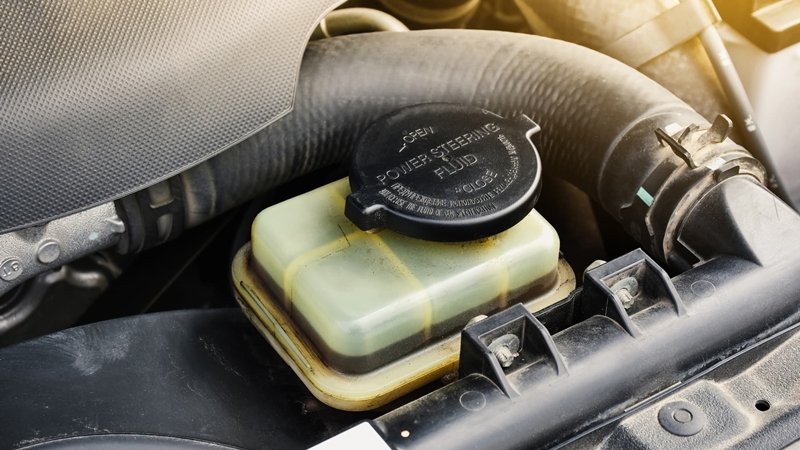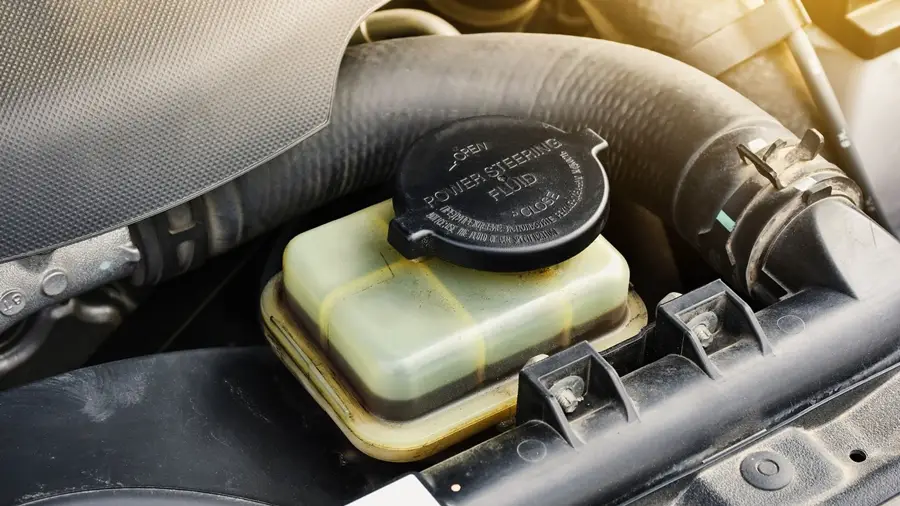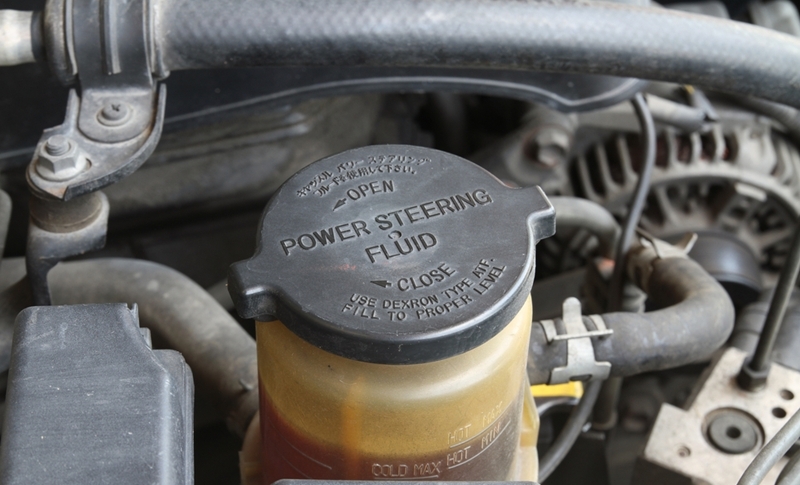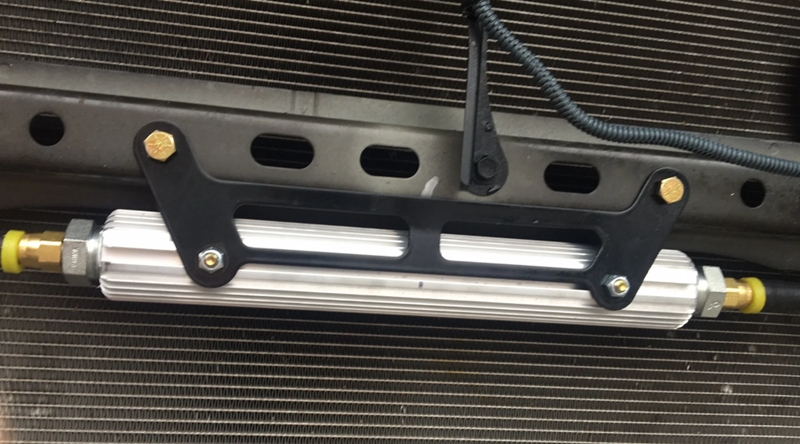Driving down the highway, you suddenly notice an unfamiliar warning light glowing on your dashboard. Your heart skips a beat as you wonder what it means and whether it’s safe to continue driving. If you’ve spotted a steering wheel icon with droplets or wavy lines, you’ve encountered the power steering fluid symbol – one of the most important yet often misunderstood dashboard indicators.
This warning light serves as your vehicle’s way of communicating a critical issue with your power steering system. When the power steering fluid symbol illuminates, it’s signaling that your steering assistance may be compromised, potentially making your car more difficult and dangerous to control. Understanding what this symbol means, why it appears, and how to respond appropriately could save you from costly repairs and ensure your safety on the road.
Modern vehicles rely heavily on power steering systems to provide the smooth, effortless steering we’ve come to expect. Without adequate power steering fluid or proper system function, even simple maneuvers like parking or navigating tight turns become physically demanding and potentially hazardous. The power steering fluid symbol acts as an early warning system, alerting you before complete system failure occurs.
Key Takeaways
- The power steering fluid symbol typically appears as a steering wheel with droplets, wavy lines, or fluid indicators
- This warning light indicates low fluid levels, system leaks, or pump malfunctions in your power steering system
- Immediate attention is required when this symbol appears to prevent steering difficulty and potential safety hazards
- Regular maintenance and fluid checks can prevent most power steering issues from developing
- Ignoring the power steering fluid symbol can lead to expensive repairs and dangerous driving conditions
- Professional diagnosis is recommended when the warning persists after basic troubleshooting
Table of Contents
What Does the Power Steering Fluid Symbol Look Like?
The power steering fluid symbol varies slightly between vehicle manufacturers, but most share common design elements that make them recognizable once you know what to look for. Typically, you’ll see a steering wheel icon accompanied by indicators suggesting fluid or liquid involvement. The most common variations include a steering wheel with small droplets beneath or around it, wavy lines representing fluid flow, or a combination of both elements.
Some manufacturers use a more abstract approach, displaying a circular steering wheel outline with fluid-related symbols integrated into the design. The color of the power steering fluid symbol is usually amber, yellow, or red, depending on the severity of the detected issue. Red typically indicates an immediate problem requiring urgent attention, while amber or yellow suggests a developing concern that needs addressing soon.
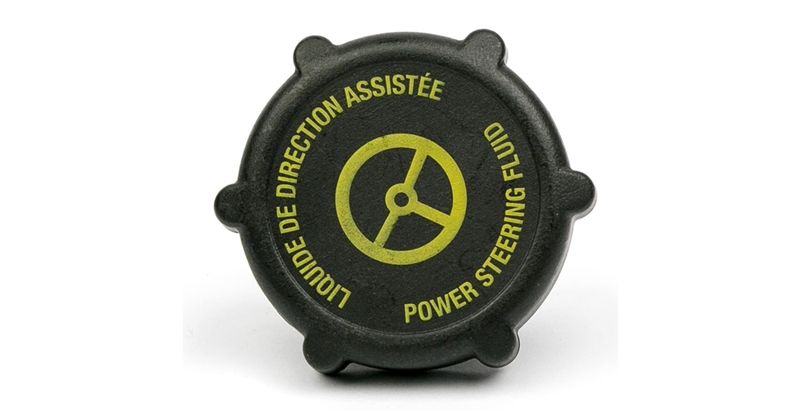
European vehicles often feature slightly different symbol designs compared to American or Asian manufacturers, but the core concept remains consistent. The steering wheel element is almost always present, as it immediately connects the warning to the steering system in drivers’ minds. Understanding these variations helps you recognize the power steering fluid symbol regardless of your vehicle’s make or model.
8 Power Steering Fluid Symbol Warning Signs You Can’t Ignore
Recognizing the warning signs associated with power steering problems can save you from dangerous situations and expensive repairs. These eight critical indicators progress from early symptoms to complete system failure, making early detection crucial for your safety and wallet.
- Dashboard Symbol Illumination – The most obvious sign is when the steering wheel icon with droplets or wavy lines appears on your dashboard. This is your vehicle’s first attempt to warn you of developing problems.
- Heavy or Difficult Steering – When your steering becomes noticeably harder to turn, especially at low speeds or when parking, your power steering assistance is compromised. This symptom often accompanies the power steering fluid symbol.
- Whining or Squealing Noises – Unusual high-pitched sounds when turning the steering wheel typically indicate pump cavitation due to low fluid levels or air in the system.
- Fluid Puddles Under Vehicle – Red, pink, or amber fluid spots where you park clearly indicate external leaks in your power steering system that require immediate attention.
- Intermittent Symbol Activation – When the warning light comes on and off sporadically, it suggests developing problems that may worsen quickly under certain driving conditions.
- Contaminated or Dark Fluid – Power steering fluid that appears black, thick, or contains visible debris indicates system contamination that can damage expensive components.
- Steering Wheel Vibration – Unusual vibrations felt through the steering wheel during turns often accompany other power steering problems and shouldn’t be ignored.
- Complete Loss of Power Assist – The most serious sign occurs when steering becomes extremely difficult, as if the power steering system has completely failed, creating immediate safety concerns.
Also read: Power Steering Oil Leak: 7 Costly Mistakes Drivers Make
Common Causes Behind the Power Steering Fluid Symbol
When the power steering fluid symbol appears on your dashboard, several underlying issues could be responsible.
- The most frequent cause is simply low power steering fluid levels, which can result from normal system operation over time or indicate a developing leak somewhere in the system. Power steering systems are designed to be closed loops, so significant fluid loss usually points to a problem requiring attention.
- Leaking power steering components represent another major cause of symbol activation. Common leak points include the power steering pump, pressure hoses, return lines, steering rack, or connections between these components. Even small leaks can eventually lead to low fluid levels and system performance issues, triggering the warning symbol.
- Power steering pump failure or malfunction can also trigger the power steering fluid symbol. The pump is responsible for pressurizing the fluid and circulating it throughout the system. When pumps begin failing, they may not maintain adequate pressure or flow rates, causing the system to detect problems and illuminate the warning light.
- Contaminated or degraded power steering fluid presents another potential cause. Over time, power steering fluid breaks down, becomes contaminated with debris, or loses its lubricating properties. This degradation can affect system performance and trigger warning symbols even when fluid levels appear adequate.
Also read: Power Steering Oil Change: 5 Critical Mistakes That Could Destroy Your Car
Immediate Steps When the Symbol Appears
When you notice the power steering fluid symbol illuminating on your dashboard, taking appropriate immediate action can prevent more serious problems from developing. First, assess your current driving situation and find a safe location to stop and investigate. Avoid making sudden steering movements, as your power steering assistance may be compromised.
Once safely stopped, turn off the engine and allow it to cool for a few minutes before checking the power steering fluid reservoir. The reservoir is typically located near the engine, often on the driver’s side, and features a cap marked with a steering wheel symbol or “Power Steering” text. Check the fluid level against the minimum and maximum marks on the reservoir or dipstick.
If the fluid level appears low, you may add the appropriate type of power steering fluid to bring it back to the proper level. However, be cautious about adding fluid without understanding why levels dropped in the first place. If you recently had the system serviced, slight settling might explain the low level. If you haven’t had recent service, a leak is likely present.
Look around the engine bay and under the vehicle for signs of power steering fluid leaks. Power steering fluid is typically red, pink, or amber in color and has a somewhat oily consistency. Fresh leaks may still be wet, while older leaks might appear as dark stains or dried deposits on components and the ground.
Also read: Power Steering Liquid: 7 Must-Known Facts That Could Save You Thousands
Long-term Solutions and Maintenance
Preventing power steering fluid symbol activation requires regular maintenance and attention to your vehicle’s power steering system. Most manufacturers recommend checking power steering fluid levels during regular oil changes or at least every few months. This simple inspection can identify developing problems before they become serious enough to trigger warning symbols.
Power steering fluid should be changed periodically, though intervals vary significantly between manufacturers. Some recommend changes every 30,000 to 60,000 miles, while others suggest much longer intervals or even lifetime fluid. Consult your owner’s manual for specific recommendations, but consider changing the fluid more frequently if you notice contamination or degradation.
Regular inspection of power steering system components helps identify potential problems early. Check hoses for signs of cracking, bulging, or deterioration, particularly where they connect to other components. Look for fluid residue around connections, which might indicate developing leaks. Pay attention to any changes in steering feel or unusual noises when turning the wheel.
Professional power steering system service includes flushing old steering fluid, replacing filters if equipped, and inspecting all system components for wear or damage. This comprehensive approach addresses not just fluid levels but overall system health, potentially preventing expensive failures that could leave you stranded.
Different Vehicle Types and Variations
The power steering fluid symbol and related systems vary considerably between different types of vehicles and manufacturers.
- Luxury vehicles often feature more sophisticated monitoring systems that can distinguish between different types of power steering problems, providing more specific information about the nature of the issue. These advanced systems might display text messages alongside or instead of simple symbols.
- Electric power steering systems, increasingly common in newer vehicles, may not use traditional hydraulic fluid at all. These systems use electric motors to provide steering assistance and typically feature different warning symbols and diagnostic procedures. However, some hybrid systems combine electric and hydraulic assistance, potentially displaying power steering fluid symbols even in partially electric systems.
- Heavy-duty trucks and commercial vehicles often have more robust power steering systems with larger fluid capacities and different maintenance requirements. The power steering fluid symbol in these vehicles might indicate different threshold levels or system parameters compared to passenger cars.
- Performance and sports cars sometimes feature variable-ratio power steering or other advanced systems that may have unique symbol variations or additional warnings related to system modes or performance settings. These vehicles might display multiple steering-related symbols depending on driving conditions or selected settings.
Cost Implications of Ignoring the Warning
Ignoring the power steering fluid symbol can lead to progressively more expensive repairs and potentially dangerous situations. Initially, addressing low fluid levels or minor leaks might cost between $50 to $200 for fluid replacement and basic repairs. However, allowing problems to persist can result in much more significant expenses.

Power steering pump replacement, often necessary when pumps run without adequate fluid lubrication, typically costs between $300 to $800 depending on the vehicle. Steering rack replacement, required when internal seals fail due to contaminated or insufficient fluid, can cost $800 to $2,000 or more. These major component failures often result from ignoring early warning signs like the power steering fluid symbol.
Beyond direct repair costs, driving with compromised power steering creates safety risks that could result in accidents and associated costs. Difficulty steering, especially in emergency situations, significantly increases accident risk. Insurance companies may also question coverage if accidents result from ignored maintenance warnings.
The inconvenience and potential safety hazards of sudden power steering failure far outweigh the cost of addressing problems when the power steering fluid symbol first appears. Prompt attention to warning symbols typically results in simpler, less expensive repairs compared to waiting until complete system failure occurs.
Troubleshooting Guide

Professional vs. DIY Repairs
Determining when to handle power steering fluid symbol issues yourself versus seeking professional help depends on several factors including your mechanical experience, available tools, and the complexity of the problem. Simple tasks like checking fluid levels or adding fluid are generally safe for most vehicle owners to perform with basic precautions.
However, diagnosing the root cause of power steering problems often requires specialized knowledge and equipment. Professional technicians have access to pressure testing equipment, diagnostic scanners, and technical information that helps identify problems accurately. They can also properly flush systems and ensure all air is removed from hydraulic lines.
Attempting complex power steering repairs without proper knowledge or tools can worsen problems and create safety hazards. Improperly installed components or incorrect fluid types can damage expensive system components or create dangerous driving conditions. When in doubt, professional diagnosis provides peace of mind and ensures proper repair.
Even if you’re comfortable performing basic maintenance, consider professional service for major component replacement or when multiple symptoms suggest complex system problems. The cost of professional diagnosis is often worthwhile to avoid expensive mistakes or safety issues.
Prevention Strategies

Preventing power steering fluid symbol activation involves establishing regular maintenance routines and staying alert to changes in your vehicle’s behavior. Monthly fluid level checks take only a few minutes but can identify problems before they become serious. Make this part of your regular vehicle inspection routine along with checking oil, coolant, and tire pressure.
Pay attention to changes in steering feel, unusual noises, or any signs of fluid leaks in your parking areas. Early detection of problems allows for less expensive repairs and prevents the inconvenience of unexpected breakdowns. Keep records of maintenance and repairs to track patterns and identify recurring issues.
Using the correct type of power steering fluid is crucial for system longevity and performance. Different vehicles require different fluid specifications, and using incorrect fluid can damage seals and other components. Always consult your owner’s manual or a qualified technician when adding or replacing power steering fluid.
FAQ: Power Steering Fluid Symbol
-
Can I continue driving when the power steering fluid symbol appears?
You should stop driving as soon as safely possible when this symbol appears. While you might be able to steer the vehicle, the effort required increases significantly, especially at low speeds, creating a safety hazard.
-
How often should I check my power steering fluid?
Check your power steering fluid level at least monthly, or every time you check your oil. This regular inspection helps catch problems early before they trigger warning symbols.
-
What type of power steering fluid should I use?
Always use the specific type of power steering fluid recommended in your owner’s manual. Using the wrong fluid can damage seals and other system components, leading to expensive repairs.
-
Why does my power steering fluid symbol come on intermittently?
Intermittent symbol activation often indicates a developing problem, such as a small leak that only affects the system under certain conditions. Have the system inspected promptly to prevent more serious issues.
-
Can cold weather affect my power steering system?
Yes, extremely cold temperatures can thicken power steering fluid and affect system performance. If you consistently see the symbol in cold weather but not when warm, consider having your fluid checked for proper specification.
-
How much does it cost to fix power steering problems?
Costs vary widely depending on the problem. Simple fluid additions might cost $20-50, while major component replacements can cost $800-2000 or more. Early attention to warning symbols typically results in less expensive repairs.
-
Can I add brake fluid to my power steering system in an emergency?
Never add brake fluid or any other fluid to your power steering system. Different fluids have different properties and can severely damage system components. Only use the specified power steering fluid type.
Final Thoughts
Understanding your vehicle’s power steering fluid symbol empowers you to respond appropriately when this important warning appears. This small dashboard indicator serves as an early warning system that can prevent expensive repairs, dangerous driving situations, and unexpected breakdowns. By recognizing the symbol, understanding its implications, and taking prompt action, you protect both your safety and your wallet.
Need a mechanic? Find one on the Mobile Mechanic Directory
Regular maintenance and attention to your power steering system help prevent most problems that trigger warning symbols. Simple monthly fluid level checks, annual professional inspections, and prompt attention to any changes in steering feel or unusual noises can identify issues before they become serious. The few minutes spent on preventive maintenance far outweigh the time, expense, and inconvenience of dealing with power steering system failures.
Remember that your vehicle’s warning systems are designed to protect you and your investment. When the power steering fluid symbol appears, treat it as the important safety alert it represents. Whether the solution involves simply adding fluid or requires professional repair, addressing the issue promptly ensures your continued safety and helps maintain your vehicle’s reliability for years to come. Stay informed, stay proactive, and never ignore the messages your vehicle is trying to communicate through its dashboard warning symbols.

